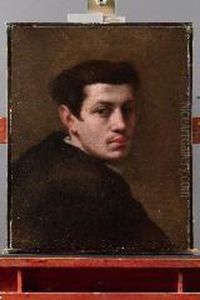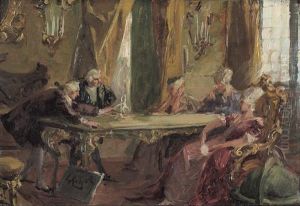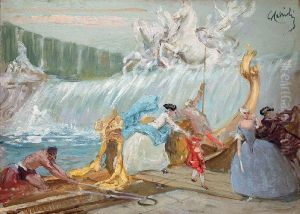Giuseppe Cassioli Paintings
Giuseppe Cassioli was an Italian painter and sculptor, born on October 22, 1865, in Asciano, Tuscany, Italy. He is best known for designing the obverse of the Olympic gold medal that was used from the 1928 Summer Olympics in Amsterdam to the 2004 Summer Olympics in Athens. Cassioli was deeply rooted in the tradition of the Italian Renaissance, but he also embraced the Neoclassical style, making his works a blend of classical beauty and early 20th-century art.
Cassioli received his artistic training at the Academy of Fine Arts in Florence, where he was influenced by the city's rich artistic legacy. His talent was recognized early in his career, leading to commissions that included both public monuments and private artworks. Besides his contributions to medallic art, Cassioli was also known for his frescoes, oil paintings, and sculptures, showcasing his versatility as an artist.
One of Cassioli's most significant contributions to the art world was his design for the Olympic medal, which came about through a competition held by the International Olympic Committee (IOC) in 1921. His design featured Nike, the Greek goddess of victory, holding a palm in her left hand and a winner’s crown in her right—a design that became iconic in the sports world. Although the original intention was for the design to be used only for the 1928 Olympics, it proved so popular that it continued to be used for nearly 80 years, with only minor modifications.
Throughout his life, Cassioli remained active in the Italian art scene, contributing to various exhibitions and receiving multiple accolades for his work. Despite his death in Florence on September 5, 1942, Cassioli's legacy lives on, particularly through the Olympic medals that still bear his signature design. His work remains a testament to the enduring appeal of classical art and its influence on modern traditions.




